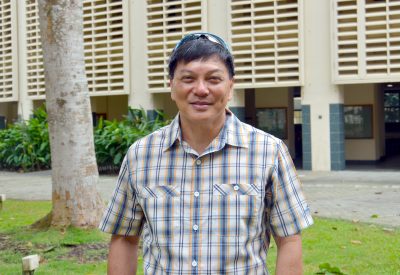Fostering a Sense of Place Through the Outdoors
A common perception among teachers and parents is that outdoor learning focuses largely on adventure activities that carry a certain degree of risk. Extending outdoor education to the wider school community while mitigating this negative perception requires a deeper look into the philosophies behind outdoor education and how it can lead to real, authentic learning for students.

Beyond participating in outdoor activities, Kim Seng believes it is important that students reflect on their experiences in order to learn.
Kayaking, hiking and mountain-climbing – these are some activities that come to mind when one thinks of outdoor education. However, outdoor education is more than just participation in such adventures.
Reflective and Experiential Learning
According to Mr Tay Kim Seng, Senior Specialist (Outdoor Education) at the Ministry of Education (MOE), one of the key philosophies behind outdoor education as espoused by John Dewey is that of experiential education: providing an educative experience rooted in real world situations. Dewey’s philosophy further suggests that if students do not reflect on their own learning and apply the learning into future situations, the experience may not be educative.
“To make an experience educative, it is not enough to just expose students to outdoor activities,” says Kim Seng. “We need to bring them to the next stage of reflecting on what they have been experiencing in order for them to learn. This is a critical aspect of experiential learning.”
“We need to help our children be more inquisitive about the environment.”
– Kim Seng, on the need to look beyond the adventure aspect of outdoor education
Place-based Learning
One way educators can emphasize reflection during outdoor activities is through place-based learning. While outdoor education is invariably about the acquisition of outdoor skills through adventure activities, it should not neglect the insights and knowledge that students can gain from the outdoor spaces themselves, says Kim Seng.
His research centres on the concept of place-based learning, which seeks to help students develop an awareness, sensitivity and concern for the environment.
By incorporating place-based learning into the outdoor education curriculum, teachers can create more authentic learning experiences for their students. “Getting kids to learn more about place, people and the natural world helps us to educate for the larger aim of sustainability,” he explains. “It also leads to community-based learning and citizenship education.”
Gaining Both Skills and Knowledge
To implement place-based learning, a fundamental question about outdoor education
the teacher should ask is: What does the place have to offer in terms of opportunities for student learning? Instead of treating a place as a mere “backdrop” to an activity, immersion into different environments can help students become more aware of places and people, and develop curiosity about their surroundings.
He cites an example of how a school trip to Kota Tinggi in Malaysia can be a valuable opportunity for students to learn about the significance of a place.
“There was one school that brought their students on a kayaking expedition along the Johor River in Kota Tinggi and many of these students did not know that a large part of our water supply from Johor River is treated there,” says Kim Seng. Such a situation is an opportunity for students to learn about the historical significance of Kota Tinggi and the water scarcity problem Singapore faces.
“There are many potential learning opportunities when you combine place-based learning with adventure learning, so the focus shouldn’t just be kayaking,” he adds. “We need to help our children be more inquisitive about the environment.”
In this case, place-based learning could also involve students interacting with the people living along the river bank to better understand real world issues such as water scarcity and environmental degradation.
“Getting kids to learn more about places, people and the natural world helps us to educate for the larger aim of sustainability.”
– Kim Seng on why it is important to develop students’ awareness of their surroundings
Education for Sustainability
With challenges such as climate change facing us, Kim Seng hopes that outdoor education will eventually be more broad-based to include environmental education and education for sustainability.
“In Outward Bound Singapore (OBS), they teach our students to adhere to the ‘leave no trace’ principles to protect our natural spaces, but education for sustainability goes beyond that,” he says. “We need to educate our students on the scarcity of natural resources and the need to live sustainably on a daily basis. Place-based learning is one approach to do this.”
One way to practise sustainable living is to start with the classroom. By fostering a sense of attachment to a place – in this case, the classroom – students naturally learn to conserve energy (by switching off the lights) and keep the classroom clean (by picking up litter on the ground), among other things.
“At the primary school level, we encourage teachers to start in the classroom and school backyard. At the secondary level, we encourage them to bring students out to a local park and community where they can learn more about the environment and people,” he says. “Given the importance of education for sustainability, outdoor education can play a more prominent role in preparing students for the issues confronting us today.”






